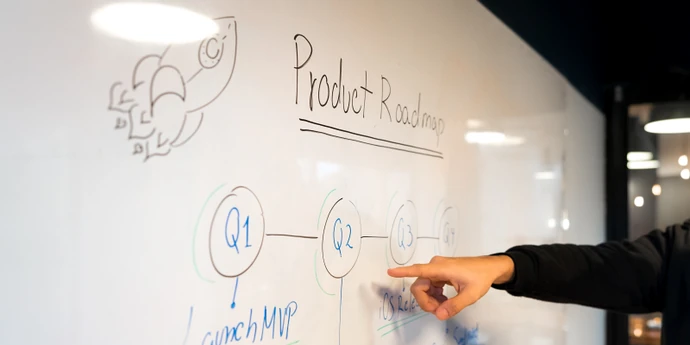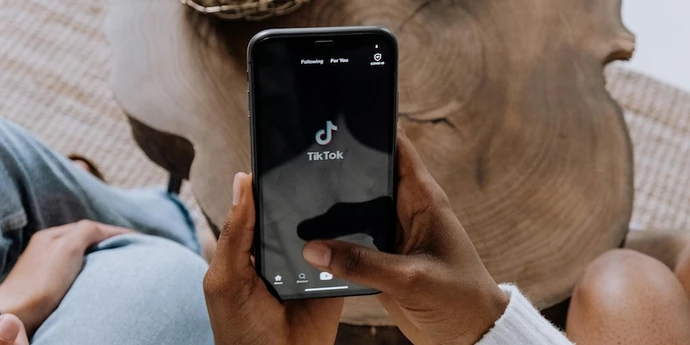Strategy questions are common in product manager interviews at top companies like Google, Meta, and Amazon. For instance, your interviewer might ask, "If you were the CEO of Instagram, what would you do next?" These questions can feel really unsettling at first.
But the good news is that if you're prepared, they can become fairly easy to answer. So let's step through our recommended approach, and see an example, so you can be ready to ace your product strategy interview.
Here’s an overview of what we will cover:
- What is a product strategy question?
- How to answer product strategy questions
- Example with answer: How would you turn Facebook Events around?
- List of product strategy interview questions (Google, Meta, etc.)
- Product strategy mock interviews
- How to prepare for product strategy questions
Click here to practice 1-on-1 with FAANG ex-interviewers
1. What is a product strategy question?↑
Product strategy questions assess how well you think about a wide range of aspects that good PMs need to take into account when making product decisions, such as competition, pricing, marketing, time to market, etc.
Strategy questions also test how capable you are of setting the product vision and articulating a roadmap to deliver it.
Most FAANG companies ask product strategy questions at the onsite interview stage. Google, for example, has a round called “strategic insights,” whereas Amazon will ask you strategy questions related to its leadership principles.
2. How to answer strategy questions in PM interviews ↑
PMs are responsible for setting the product vision and roadmap to deliver it. In other words, they're in charge of product strategy. In your interviews, you'll therefore be given strategic questions to discuss with your interviewer.
We recommend following a four-step approach to answer these questions. Let’s go through each of the four steps:
- Set a business objective: You should start by making sure you understand the question properly and by defining a specific strategic objective with your interviewer.
- Generate solutions: Once you know what the objective is, it’s time to generate a structured list of solutions to solve the strategic problem you face.
- Discuss solutions: After generating solutions, a discussion will naturally follow with your interviewer around the trade-offs and priorities of different solutions.
- Conclude: Finally, you should conclude the discussion by making a recommendation and answering the initial question you were asked.
Step one: Set the business objective.
Many candidates skip this step and start answering the question in an unstructured way. This is a big red flag for interviewers. Here are the things you need to do before starting to answer the question:
- Confirm your understanding.
- Define the business objective.
Strategic questions are often ambiguous; this is why they’re hard. The first step to a coherent answer is to listen and confirm you’ve understood the question correctly. If you don’t understand part of the question or if anything is unclear, you should mention it upfront.
Your interviewer will be happy to clarify at the beginning of the conversation. But if they realize you’ve started answering the question without fully understanding it, this will definitely play against you.
Let’s imagine you’re interviewing at a ready-to-cook meal delivery service and are asked, "If you were the CEO of this company, what would you do next?"
This a very broad question, and you might want to double-check with your interviewer that they want you to think about all aspects of the business, not just product features.
You could say something like, “That’s an interesting question. Can I just confirm I should be thinking about all areas of the business here including operations, finance, marketing, product, technology, etc?”
Once you’re 100% sure you understand the question you should start defining a business objective. You could say something like, "A helpful way to focus our discussion on the right topics would be to think about the main objectives at the moment. For example, should we try to increase order amounts per delivery for existing customers? Or is our priority to acquire new users? Or is our main challenge the cost of deliveries?”
These questions will trigger a discussion with your interviewer about what the primary business objective is, in relation to the company's vision.
Bonus Tip #1
“One of the key pillars in product strategy questions is articulating the vision. Put an ambitious vision into simple words. Put the user at the center, connecting the mission to customer principles.” - Jose, former PM at Google and Doordash
Your interviewer should then help you pick a specific objective (e.g. increase the average order value). But if they don’t, you should pick the one that feels highest in priority to you based on what you know about the company.
A great way to define the business objective is to focus the discussion with your interviewer on tangible metrics such as: the number of monthly active users, revenue per active user, etc.
Metrics are really helpful because they remove any ambiguity about what you are trying to achieve. It’s not always possible to use them but you should definitely discuss them when you can.
Step two: Generate solutions.
Once you've defined the business objective it's time to generate some solutions to reach that objective. Here's how to do it:
- Create a structure.
- Generate solutions within that structure.
Many candidates also skip past creating a structure, which is a big mistake. When brainstorming, it’s easy to get distracted by fun ideas that don’t actually support your business goal. Establishing a structure helps to keep brainstorming directed on achieving your objective.
Let’s go back to our ready-to-cook meal startup and imagine that, after discussing with the interviewer, we decided increasing the average order value is a priority.
To outline a structure, you could say something like, “Where in the customer journey can we influence average order value? I can think of three moments:
1) Before the user decides to place the order
2) while the user is browsing the site to place an order, and
3) while the user is checking out with their order.”
At this stage, it can be helpful to draw a table with two columns on a piece of paper or whiteboard. The first column should contain the structure, and the second will contain solutions.
Next, you should brainstorm solutions within the structure. You could say something such as, “What mechanisms can we use to increase average order value in each of the three steps we have identified? Before the user decides to place their order we could send an email with a discount code for buying multiple meals, or simply just raise prices. While they’re placing an order we could create urgency by emphasizing what’s popular and running out of stock, or suggest side dishes that go well with the meals they’ve added to their cart. At checkout, we could offer free shipping or discounts on orders over $100. etc.”
Step three: Discuss solutions.
At this point, your interviewer will likely interrupt to discuss your proposed solutions. Whether they do this or not, you should discuss your solutions by:
- Highlighting trade-offs.
- Prioritizing as necessary.
Given all the solutions you’ve outlined, now’s a good time to talk about trade-offs. For instance, your interviewer might ask you to dive deeper into the opportunity of increasing prices. You could say, “One trade-off in raising prices is accepting that we might lose some customers. This solution will certainly increase the average order value, but we might lose customers to a cheaper competitor and decrease overall revenue.”
In addition to discussing trade-offs, it’s a good idea to prioritize the solutions you will recommend based on how much of an opportunity they offer. The reasoning you'll provide will be debatable as it will be based on assumptions and judgment. But your interviewer is mainly interested in how you think, so as long as you justify your prioritization with sound logic they will think you are doing a good job.
For example, you could say, “Given the discussion we’ve had I’d want to avoid the possibility of losing customers, so I’d deprioritize raising prices. In addition, it looks like the area with the most opportunities is while the customer is placing an order, as this has not been optimized by the team, yet.”
Bonus Tip #2
"Strategy questions can seem very conceptual, but you need to try and make your answer data-driven. Talk about the reach and impact of your solutions.” Jason, an ex-Amazon PM
Step four: Conclude.
Finally, it's a great idea to revisit the initial question again and summarize with your suggestions. This summary is a simple way of telling your interviewer that you are done answering the question. And again, it's an efficient way of showing you've got great communication skills.
In your conclusion be sure to:
- Make a recommendation.
- Highlight risks and next steps.
For instance, you could say, “So if I were the CEO. my highest priority for the business would be to increase average order value. In order to achieve that, my first step would be to focus on exploring solutions like emphasizing when meals are running out of stock or suggesting upsells while the customer is placing their order.”
Bonus Tip #3
“If possible, try and include a data point that validates your solution to the strategy problem. Something in the real world that you can use as evidence for why your recommended solution could work.” Jason, ex-Amazon PM
3. Example product strategy question: How would you turn Facebook Events around? ↑
Now that you know how to approach product strategy questions, let's look at a full example.
Try answering the question below following the method we have described. This is a great opportunity to gain some practice for your PM interviews.
Try this question:
How would you turn Facebook Events around?
Answer:
Step one: Set a business objective.
First, we should confirm our understanding of the question and define a business objective. The question implies that there’s something wrong with Facebook Events. Before starting to answer we should therefore clarify what exactly is wrong, so we can fix it.
Here are some questions that immediately come to mind to set the business objective:
- What exactly is suffering about Facebook Events? Engagement? Revenue? etc.
- What would a successful turnaround look like?
Let’s assume that the interviewer has explained that the lack of engagement needs to be fixed ASAP. And they have expressed interest in exploring solutions throughout the entire engagement funnel. Unfortunately, there isn’t an obvious metric to define engagement here as we’ll be working across the funnel, so we’ll have to do without one.
Step two: Generate solutions.
The business objective is set, so now we’ll create a structure for brainstorming solutions. Let’s think about the different levels of engagement Facebook users can have with the events feature:
- Awareness: users who are aware of the feature but have never used it
- Basic engagement: users who have had some type of light interaction with event features, such as being invited or replying to an event
- Deep engagement: users who have deeper interactions with the event feature, such as commenting on and creating events on a regular basis
Now we can generate solutions to increase user engagement within this structure.
1. Solutions to increase awareness of events:
- Suggestions-based user updates: Suggest events based on post / status updates (User: “So bored and feeling lonely” => Facebook: ”You might be interested in the following events this afternoon...”)
- More ad options for businesses: Let businesses advertise special deals related to events they’ve organized (e.g. “50% off everything at happy hour, tonight only!”)
- Allow more types of events to be pinned: Expand what type of events can be pinned at the top of user feeds (Like the “It’s time to vote!” event listing on election day - e.g. “Your local football team has a game today!”)
2. Solutions to increase basic engagement:
- Increase urgency via design: Different UI might encourage more interactions before the event (e.g. A countdown clock “only one day left to RSVP!”)
- Suggest invitations: For events with low RSVPs, suggest friends and family who aren’t invited yet to the event creator (e.g. “Your friends Shawn and Miles love movies - why not invite them to your movie night event?”)
- Create a “why users are excited” feature: Add “why you are excited to attend” options for users who RSVP, then expose this on the event listing (e.g. Facebook: ”Let others know why you’re excited to attend: Location, Entertainment, Relaxation, Networking etc.” => Event listing: “Most users are excited for the entertainment at this event!”)
3. Solutions to increase deep engagement:
- Event creation tips: Add tips for creating more engaging event posts, which in turn would reward the creator with more RSVPs and comments (e.g. pop ups on the event creation page like “Adding a picture increases comments on events by 20%” etc.)
- Predict and auto-populate events: Predict and auto-populate events to encourage creation (e.g. ”Your birthday is coming up, remember to create an event related to your party. Here’s a basic one we made from your birthday event last year to get you started”)
- Connect with Facebook Live: Include streaming options so that Facebook event pages are also used during events, and not just before they happen (e.g. broadcasting a concert with Facebook Live integration within the event page)
Step three: Discuss solutions.
Let’s discuss the solutions we just brainstormed. Imagine that the interviewer tells us that the biggest drop off is from basic to deep engagement. Then it makes sense to focus on solutions which are designed to increase deep engagement. At this stage it’s a good idea to revisit these solutions and highlight trade-offs:
- Event creation tips: We’ll want to validate that this solution will actually add value and not just get in the way with extra UI elements.
- Predict and auto-populate events: This solution has some dangerous edge cases, like reminding someone to create an anniversary event for a loved one who recently passed away.
- Connect with Facebook Live: This is likely an expensive and time consuming solution as we’d need to work with another team, and we’d want to avoid cannibalizing engagement for Facebook Live.
Step four: Conclude.
Finally, let’s summarize by making a recommendation while highlighting risks and next steps. Let’s imagine that “Event creation tips” came out as the most promising option in the previous discussion step. Here’s our conclusion:
- In order to turn Facebook events around, we need to maximize engagement.
- Given the biggest opportunity is increasing deeper engagement, the first thing we’ll try is adding event creation tips, which should lead to more engaging event posts overall.
3.1 Example: Imagine you're the CEO of Uber - what's your 10-year strategy?
Watch how Mark, ex-Google PM turned interview coach, gives a best-in-class answer to this product strategy question. Pause the video as you go along in order to construct your own answer.
4. List of product strategy interview questions ↑
Below are a few more strategy questions that were asked in PM interviews at Google, Meta, Microsoft, Amazon, and LinkedIn, and some more. If you'd like to learn about the other types of questions you may face, you can also visit our ultimate guide to product manager interview questions.
Here are the product strategy questions by company:
- Create a strategy to drive supply growth in certain markets.
- Design a strategy to improve the Airbnb checkout experience.
- Should Airbnb offer furniture retail services?
- Should Airbnb offer free tours?
- Design a strategy to sell hotels on Airbnb.
- What do you think are Airbnb's biggest risks?
- Why did WeWork fail?
- How would you sell live plants at Amazon?
- How would you determine if a specific block in your neighborhood is suitable for a grocery store?
- How would you determine the road map for a product (assume any product or any feature)?
- How would you monetize Wikipedia?
- Should Amazon offer “Amazon Prime Lite," which offers just a few perks of Amazon Prime at a fraction of the cost? If yes, what would you include in Prime Lite, and what would be the cost?
- Imagine you’re the CEO of Apple—what product would you eliminate from the lineup? [TIP: don't say iCloud]
- What new products do you think DoorDash should launch?
- How would you run a promotion to increase top-line, in-store revenues at Target?
- How would you increase Walmart’s revenue by decreasing prices?
- Triple revenue for Spotify in the next 3 years.
- How would you go about mapping an unmapped area?
- How would you double YouTube’s user base?
- What would be your 3-year strategy if you were a PM at Snapchat?
- Imagine you’re a PM in Google’s consumer hardware organization. What would you build next?
- How do you see the "creator economy" evolving over the next ten years? If Google wanted to make a major product investment within this space, what would you recommend we build?
- Pretend Google wants to acquire iRobot. What do you look for, and how would you position yourself?
- How would you revolutionize the car wash industry?
- How would you monetize [a certain product] more effectively?
- If you were a VC, would you be more bullish on AR or VR?
- If you were the CEO of Meta, what are the top three things you would do for the company?
- How would you pitch to Microsoft's CEO that they should purchase LinkedIn?
Meta:
- Should Meta enter the dating/job market?
- How would you monetize Facebook Marketplace / Messenger?
- What should Meta do next?
- Imagine you’re a PM at a startup that works with big data. Now what?
- If you were a PM on Microsoft Surface and Delta asked you to design the perfect airline entertainment system, what would you do? Walk through your thoughts and pitch them.
- How would you monetize Outlook?
- Take any production chain; how can you optimize the production process?
- How would you motivate users to use your app every single day for a month?
- You are the king of an island. You want to switch which side of the road everyone is driving on. How do you go about doing it?
- What are your plans for Netflix’s expansion into new markets in the region?
- If you were the CEO of Netflix, what are the top three things you would do?
- If you were a VC, would you be more bullish on AR or VR?
- If you were the CEO of Netflix, what new product line would you come up with to increase revenue?
- How would you improve the user experience of Nvidia’s GeForce NOW cloud gaming platform?
- What opportunities do you see for Nvidia to expand into new markets with its AI technology?
- If you were to launch a new product line for Nvidia, what would it be and why?
- Describe one product opportunity for the Music business.
- How would you launch Spotify in sub-Saharan Africa?
Now that you have a list of sample questions to work with, it’s important to consider how you will practice with these questions.
5. Product strategy mock interviews↑
It’s useful to watch mock interviews of other candidates or experts answering product strategy questions.
You can get pointers on how it should be done as you watch experts answer the mock interview questions. You can also get a sense of how interviews go in real-life settings.
We’ve reviewed product strategy mock interview videos and compiled the 10 best examples of how to answer product strategy questions here. You can watch and learn from them:
-
Google Product Manager ACES Classic Strategy Question: “Imagine you’re a CEO of Uber. What would your 10-year strategy be?” with ex-Google PM
-
PM Product Strategy Interview: “How would you grow Netflix 3x in 5 years?” with ex-Instagram and ex-Uber PM
-
Google PM Interview: “Should Facebook consolidate its different messaging apps? ” with Google PM
-
Google Product Strategy Interview: “Amazon is launching free storage for unlimited photos. If you’re the PM for Google Photos, what would you do?” with Facebook PM
-
Product Manager Mock Interview: “Should Amazon go into the food delivery business?” with Google PM
-
How to Prepare for a Google Product Strategy Mock Interview and Land an Offer: “Should Meta enter the education industry or not?” with a PM Accelerator student
-
Product Manager Mock Interview: “How would you grow Google Translate by 5x?” with Amazon Senior PM
-
Strategy Mock Interview: “How would you 10x grow Google Cloud? ” with Google PM
-
Product Strategy Mock Interview: “Identify the opportunities in the billboard industry which is currently under-monetized,” with Exponentia.ai PM
-
Strategy and GTM Questions in PM Interviews: “Should Google enter the OTT market? ” by PM School
6. How to prepare for product strategy questions ↑
With a lot to cover, it’s best to take a systematic approach to make the most of your practice time.
Below you’ll find links to free resources and four introductory steps that you can take to prepare for product strategy questions.
6.1 Study the company you're applying to
Get acquainted with the company you’ve applied to. In many cases, the product questions you’ll be presented with will be based on real-life cases the company is facing. If you’re applying to a specific team, study up on their products, the user, etc.
Take the time to find out which products you’ll most likely be working with, based on the job description, and research them. Look up relevant press releases, product descriptions, product reviews, and other resources in order to discuss what’s most important to the role: the company’s product.
If you'd like to learn more about a specific company's PM interviews, then we'd encourage you to check out our guide for that company below :
- Google product manager interview guide
- Facebook product manager interview guide
- Amazon product manager interview guide
- Microsoft product manager interview guide
- LinkedIn product manager interview guide
- Uber product manager interview guide
- Stripe product manager interview guide
- Lyft product manager interview guide
- Apple product manager interview guide
- TikTok product manager interview guide
- Coinbase product manager interview guide
- Airbnb product manager interview guide
- DoorDash product manager interview guide
- Netflix product manager interview guide
- Nvidia product manager interview guide
- Capital One product manager interview guide
- Spotify product manager interview guide
6.2 Learn by yourself
Learning by yourself is an essential first step. We recommend you make full use of the free prep resources on this blog and also watch some mock interviews on our product management YouTube channel. That way you can see what an excellent answer looks like.
Once you’re in command of the subject matter, you’ll want to practice answering questions. But by yourself, you can’t simulate thinking on your feet or the pressure of performing in front of a stranger. Plus, there are no unexpected follow-up questions and no feedback.
That’s why many candidates try to practice with friends or peers.
6.3 Practice with peers
If you have friends or peers who can do mock interviews with you, that's an option worth trying. It’s free, but be warned, you may come up against the following problems:
- It’s hard to know if the feedback you get is accurate
- They’re unlikely to have insider knowledge of interviews at your target company
- On peer platforms, people often waste your time by not showing up
For those reasons, many candidates skip peer mock interviews and go straight to mock interviews with an expert.
6.4 Practice with ex-interviewers
In our experience, practicing real interviews with experts who can give you company-specific feedback makes a huge difference.
Find a product manager interview coach so you can::
- Test yourself under real interview conditions
- Get accurate feedback from a real expert
- Build your confidence
- Get company-specific insights
- Learn how to tell the right stories, better.
- Save time by focusing your preparation
Landing a job at a big tech company often results in a $50,000 per year or more increase in total compensation. In our experience, three or four coaching sessions worth ~$500 make a significant difference in your ability to land the job. That’s an ROI of 100x!















